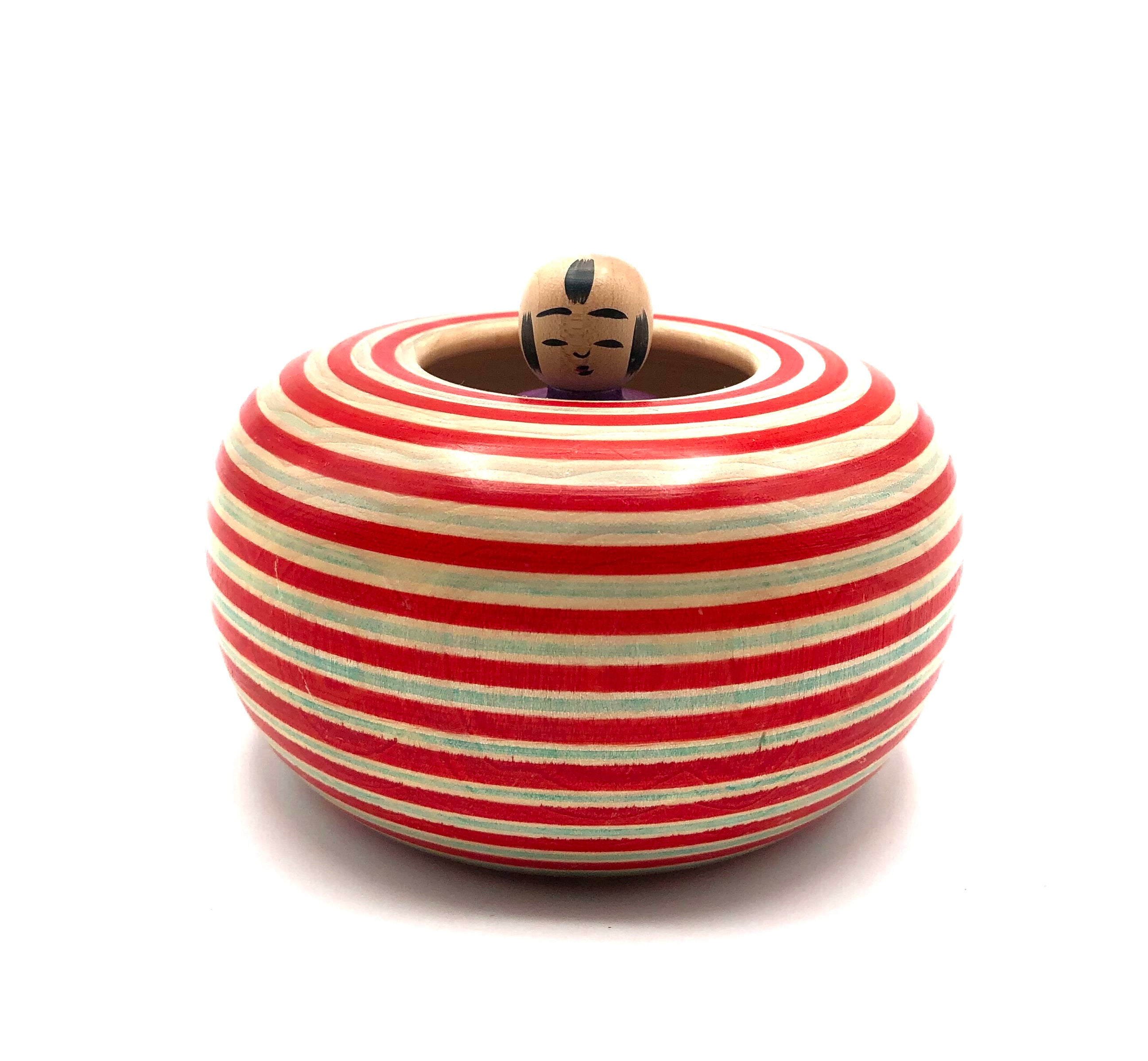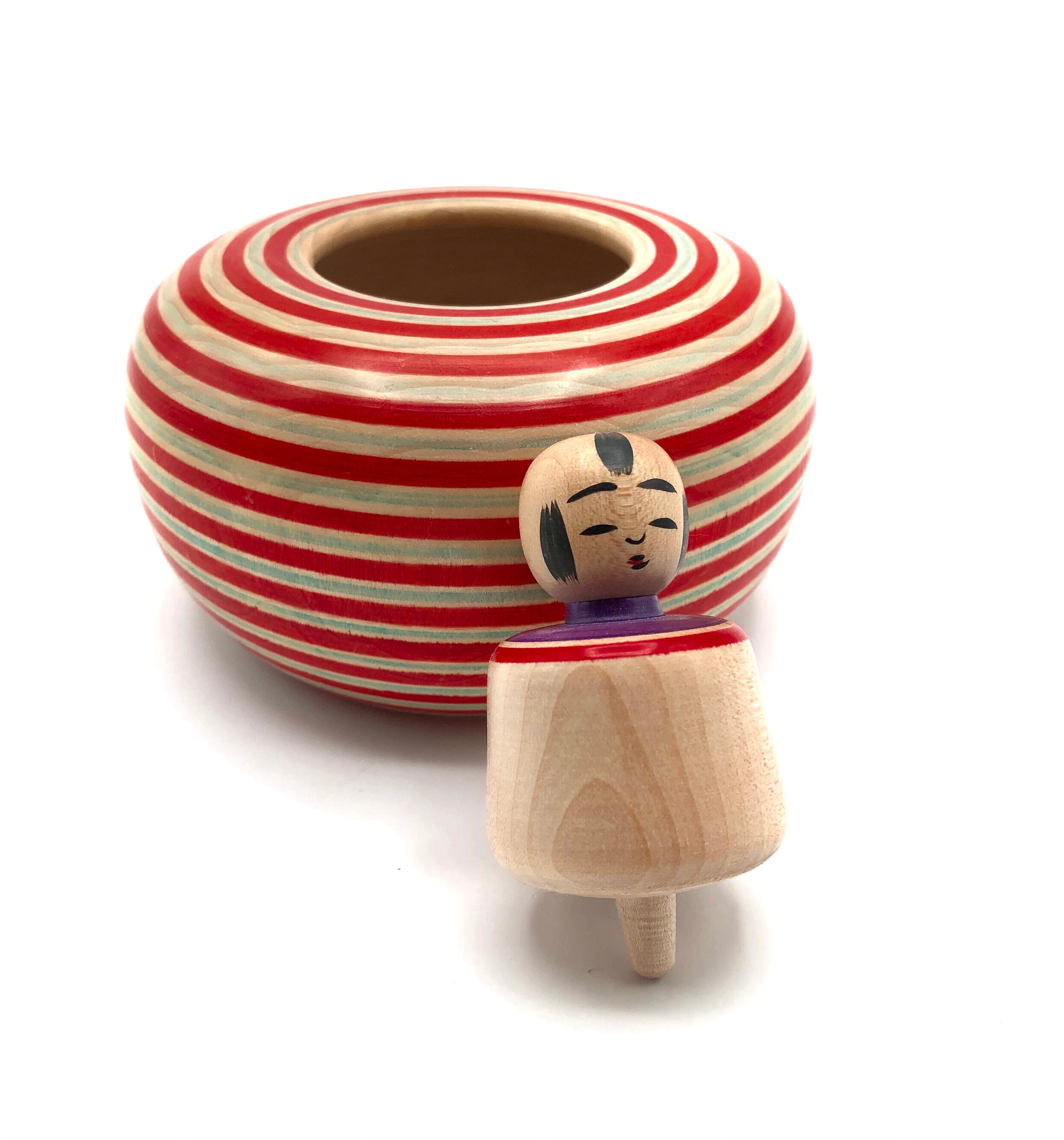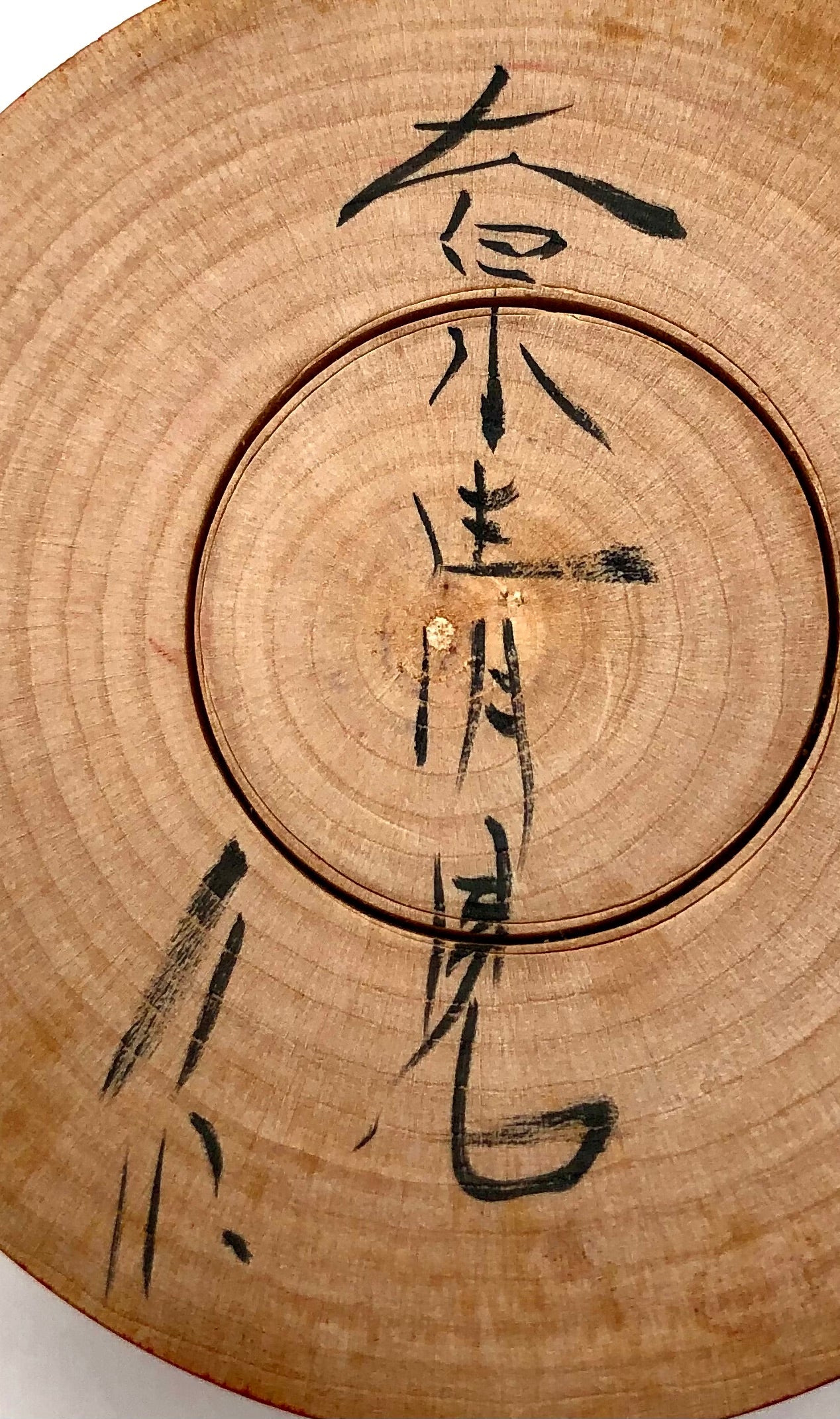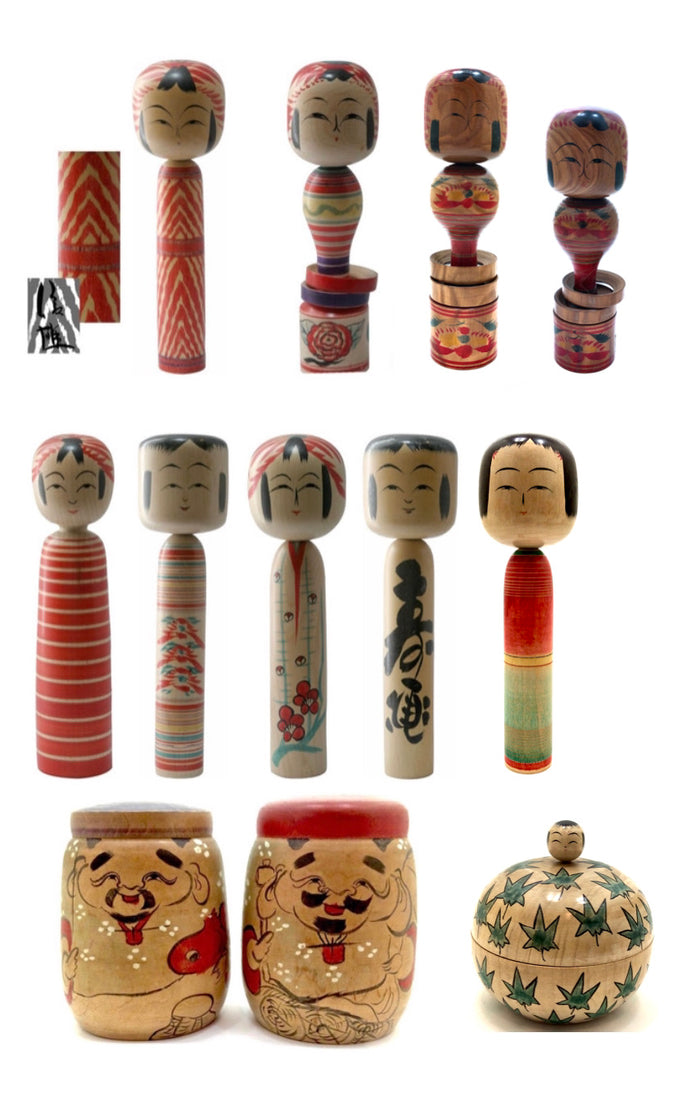


Vintage Japanese Tougatta Ejiko Baby Spinning Top | Simulated Wood Basket | Sato, Fumio (1923-)
Dimensions: 3-0”h x 4-1/2”dia.
The Ejiko’s origin is derived from a folk toy that is called an Izume.ko Doll, (Izume.Ko means “Isume baby”) that dates from the early 1910s and which comes from Tsuruoka, of the Yamagata prefecture. The toy is based on an Isume, a woven basket but in this case it is simulated in wood with the baby, which is a spinning top sitting inside. Out of the earlier prototypes arose the Ejiko doll, which has its beginnings in the 1920s.
This toy follows the basic Ejiko design which is short and round in form and hollowed out to make space for the child to sit comfortably and easing the mother’s mind throughout the day. One only sees the upper part of the child’s body (neck and head). The facial features are the same as the regular-shaped dolls in the Tougatta family of dolls having a whips of hair falling down over its forehead and side hair fringes. The shoulders of the bay only indicates the top of its clothing striped in red and topped in a purple color. The child can be removed to show that it is a spinning top and made to spin and turn while in the container as if playing. The exterior of the simulated basket utilizing the Rokoru moyo horizontal strips in red running around the body of the wood container.
You can read more about Ejiko Kokeshi Toys in our BLOG by going to: https://mingeiarts.com/collections/ejiko-izume-ko-nemariko
Condition: Excellent meaning the piece is perfect, totally original, and complete and functions as intended. No cracks, no breaks, no missing pieces, and retains its wonderful presence and is previously protected and treasured by the previous owner. This Ejiko toy meets all the standards of the collectible Vintage Kokeshi toys and tops and without question a unique treasure for the Japanese collector.

Japanese Traditional Kokeshi
Tougatta-Kei (Family)
Prefecture: Miyagi
Origin:
Tougatta dolls are considered the oldest family members of the Traditional school. They originated in the Tougatta Onsen in the Miyagi Prefecture and were subsequently produced at Aone Onsen and the cities of Sendai and Izumi. In the 1960s, Togatta craftsmen founded the Tougatta Kiji Union, a cooperative that gained the rights for reserved wood use from the Japanese Ministry of Forestry. Collectors easily find the Tougatta style in an interesting range of variations.
Collector's note – characteristics/painting style:
Tougatta dolls are easily recognized by their narrow, columnar body shapes, tapering at the shoulders, to a head that is wider than the rest of the doll, and more angular than round. The head is a squeeze-in type, and it is covered with a painting of a chrysanthemum. Most Tougatta dolls have split bangs (Hachi), with side fringes, crescent-shaped double-lidded eyes (many of which have arched brows), and a split nose or cat-type nose. Several have paintings of chrysanthemums (Kiku), plums (Ume), and irises (Ayame), usually in very stylized designs. The dolls decorated with plum branches and blossoms are associated with Aone Onsen. There is also a group that has ‘banded’ bodies primarily in red with some green. These are decorated in a circular-style painting known as Rokoru Moyo, which is done as the doll is turned on the lathe. The most collectible type is the Tougatta Mokuma style, in which the body or kimono is intricately painted with a detailed and variable wood grain pattern.
NOTE: The rare Tougatta Yamiyo dolls are created with loose rings circling the waists. Carved from the same wood as the body- it is a very meticulous method! It is also seen on Yajirou and Tsuchiyu dolls, though just as rare.

Leading Craftsmen:
Agatsuma, Shozo, 1932- No additional published information
Saito, Ryosuke, 1925-2015 - No additional published information
Sato Fumio, 1923-1986. Lineage: Tougatta lineage Master: Sato Bunsuke Disciples: Sato Hidehiro / Kobayashi Sadao / Ohata Hideo. Born in Togatta-Shinchi as the eldest son of Sato Ushizo and Tamayo, woodworkers in Togatta-Shinchi. He trained in woodworking under Sato Bunsuke. In 1940 Sato-san learned how to turn kokeshi dolls and toys. Fumio was said to have both the Bunsuke and Ushizo characters inside him and was always caught in a conflict between his two mentors from the Tougatta and Hijiori families.
Sato, Bunkichi, 1922-2008 - No additional published information
Sato, Kouichi - No additional published information
Sato, Masairo, 1938- No additional published information
Sato, Nirio, 1948, (Tougatta, Miyagi) - Master: Sato, Teruo
Sato, Teruo, 1919 - (Tougatta) -Master: Sato Seisuke
Sato, Tomio - No additional published information
Sato, Yoshiaki, (Tougatta, Miyagi) - Master: Sato, Teruo
Sato, Ushizo , Master - (Tougatta, Miyagi Spa)
Nagao, Masayoshi, 1931-2001, (Sendai, Miyagi) - Master: Sato, Mamoru
Wagamatsu, Yoshio, 1932 (Aone, Miyagi) - Master: Wagatsuma, Kichisuke
Explore & Learn More about Tougatta-Kei (Family)